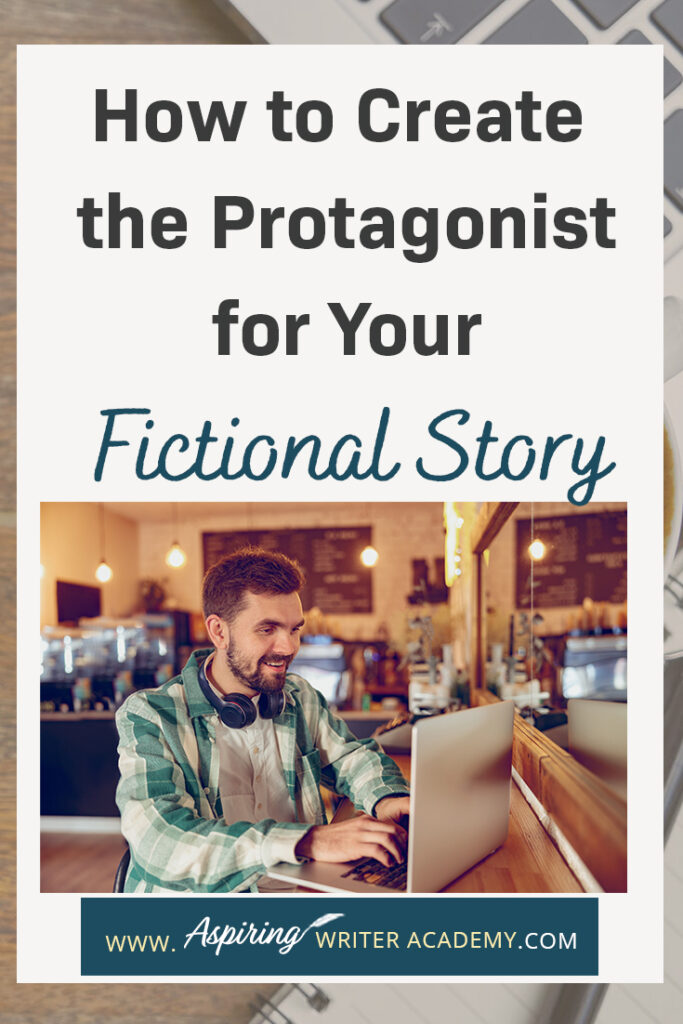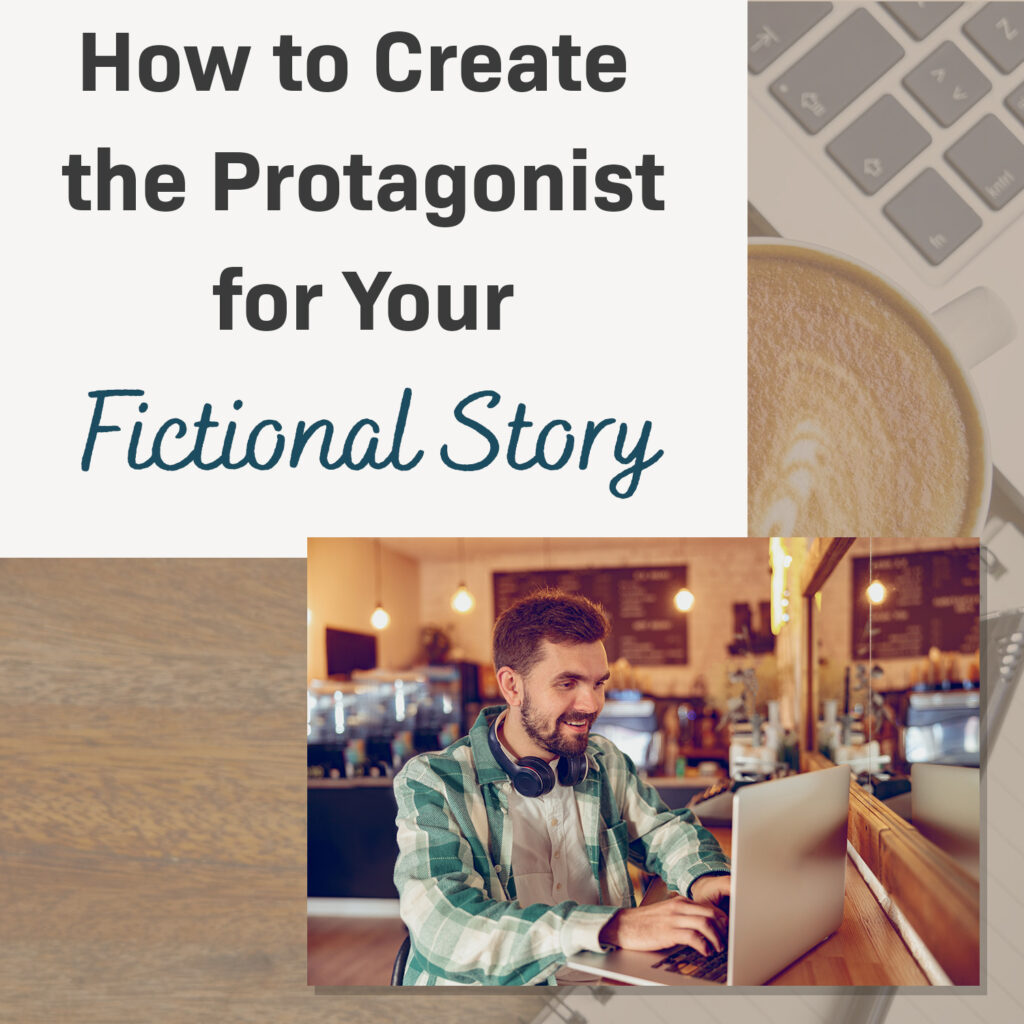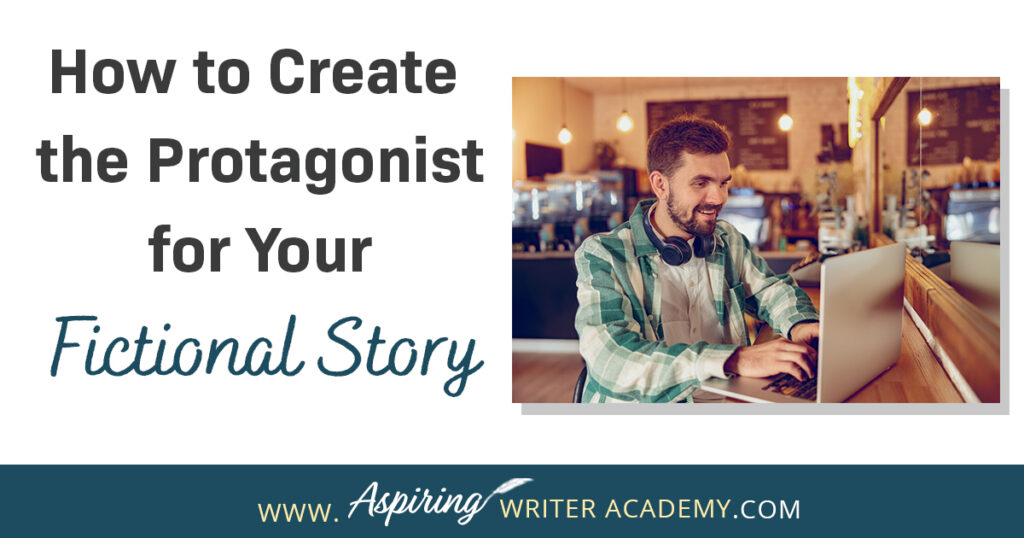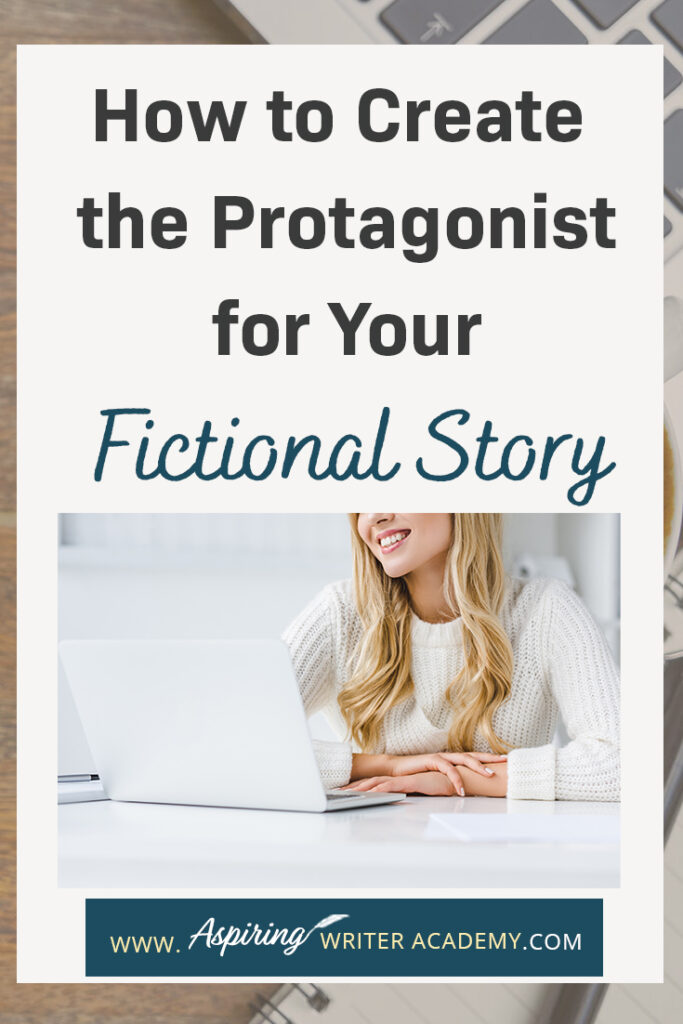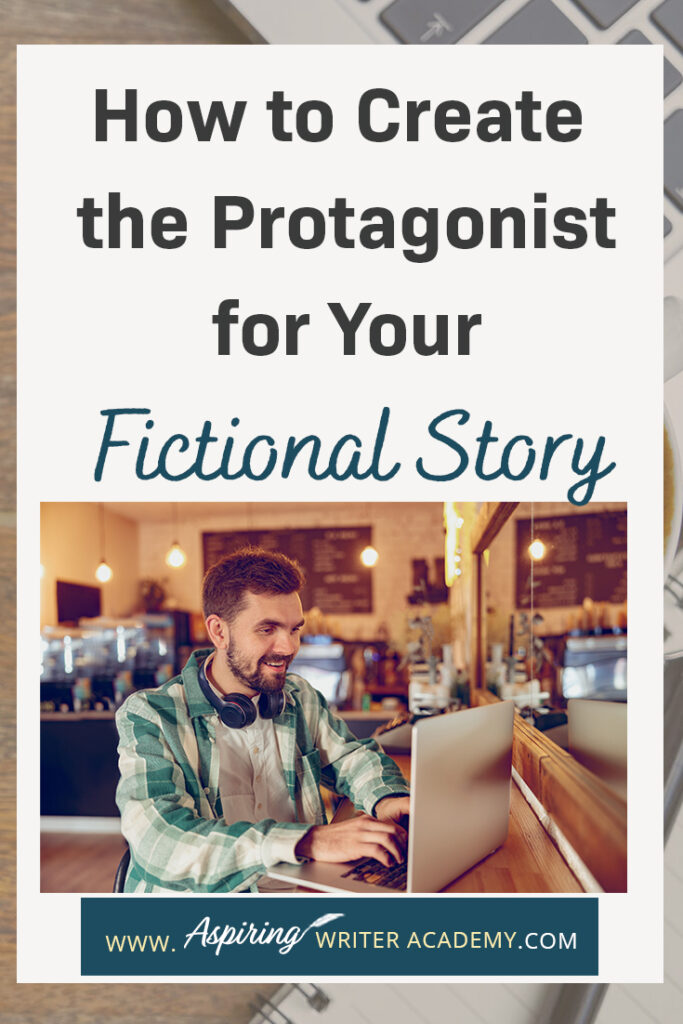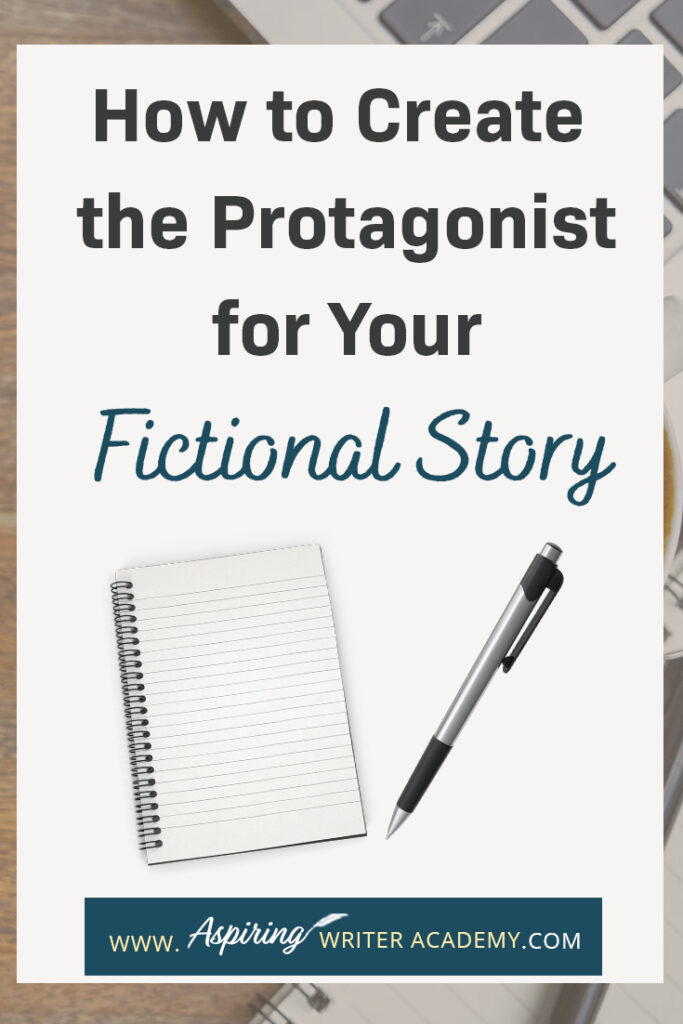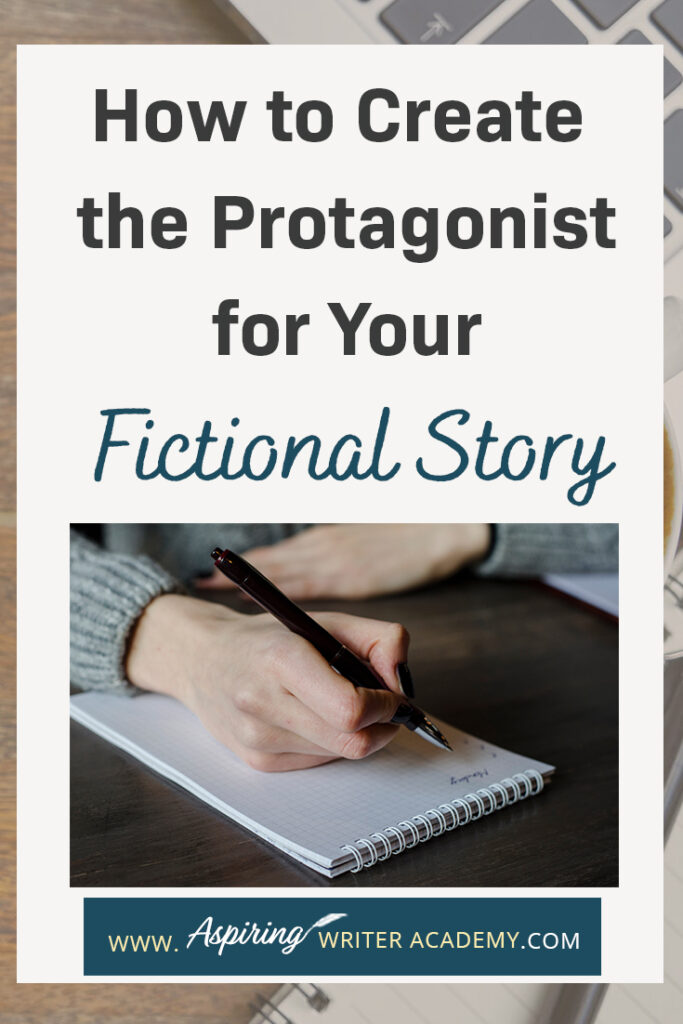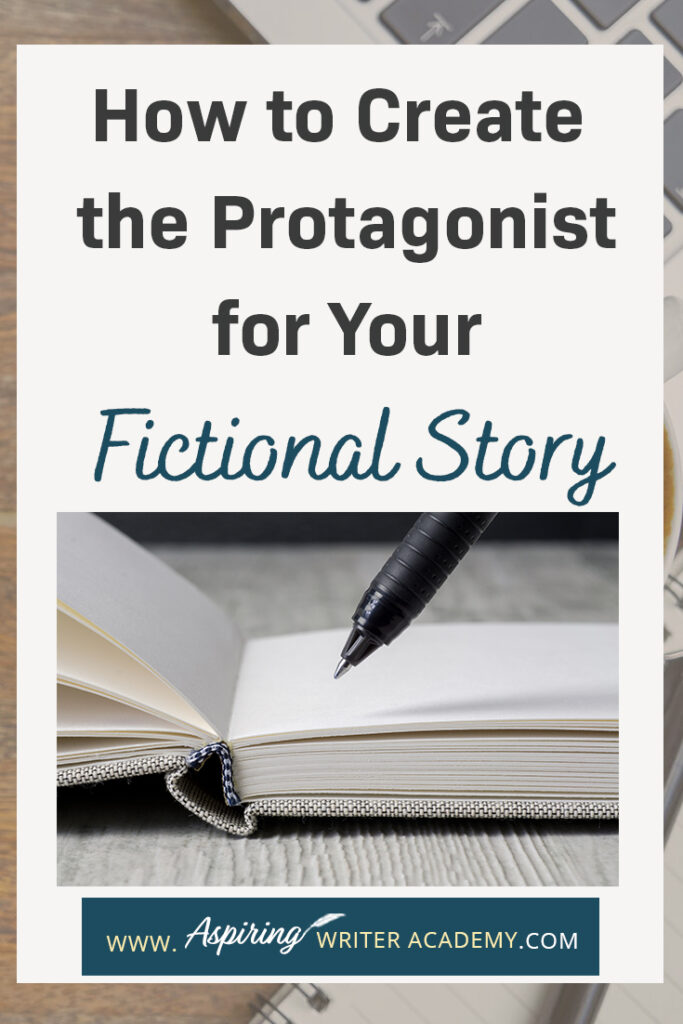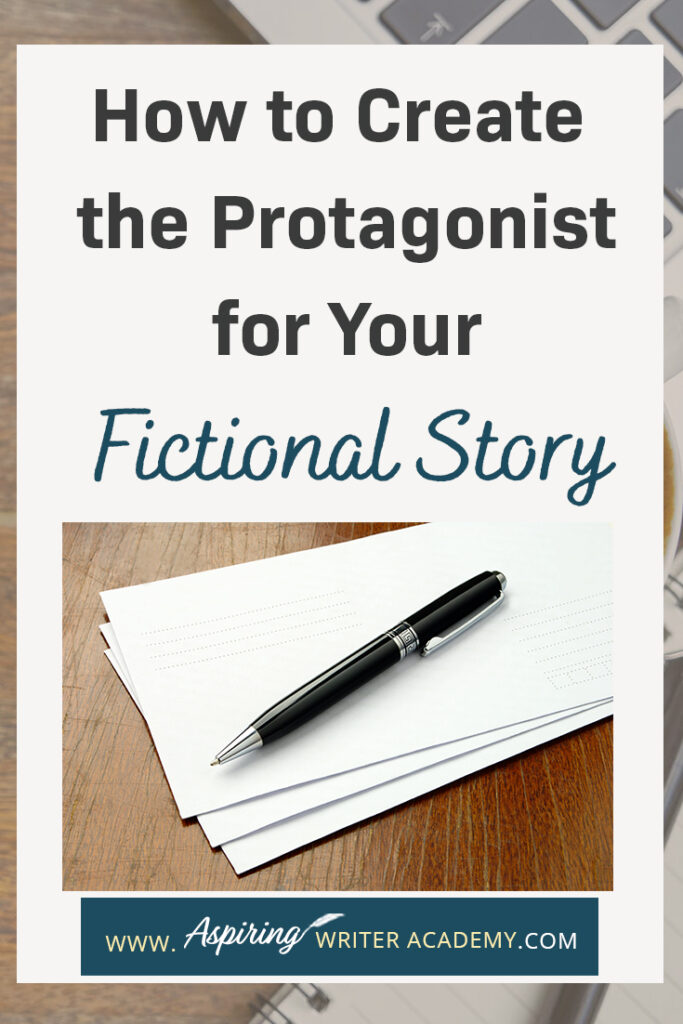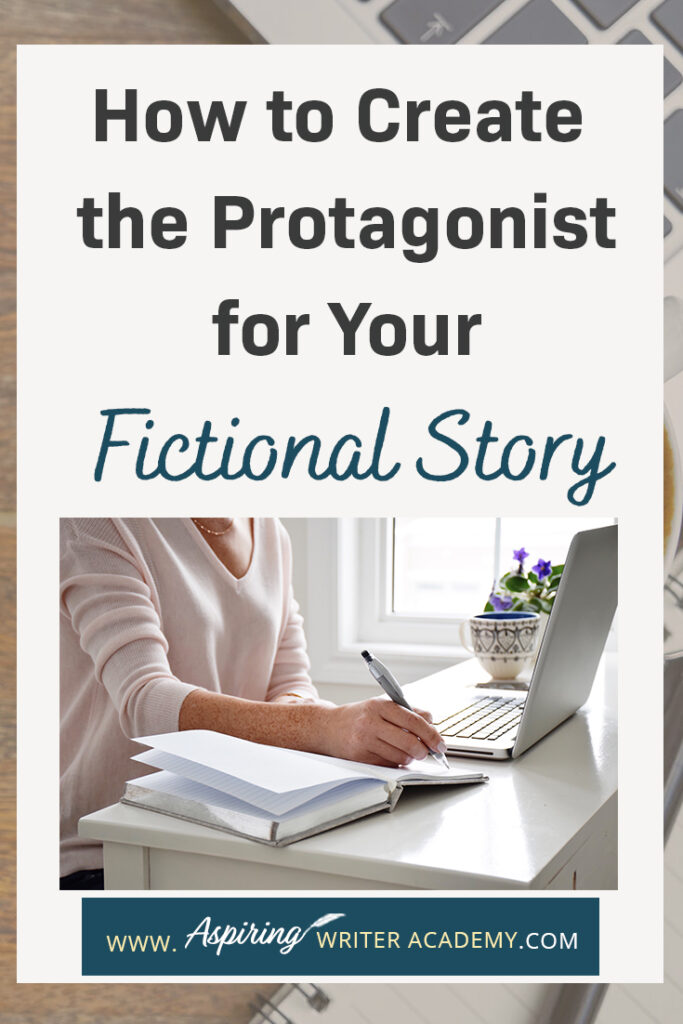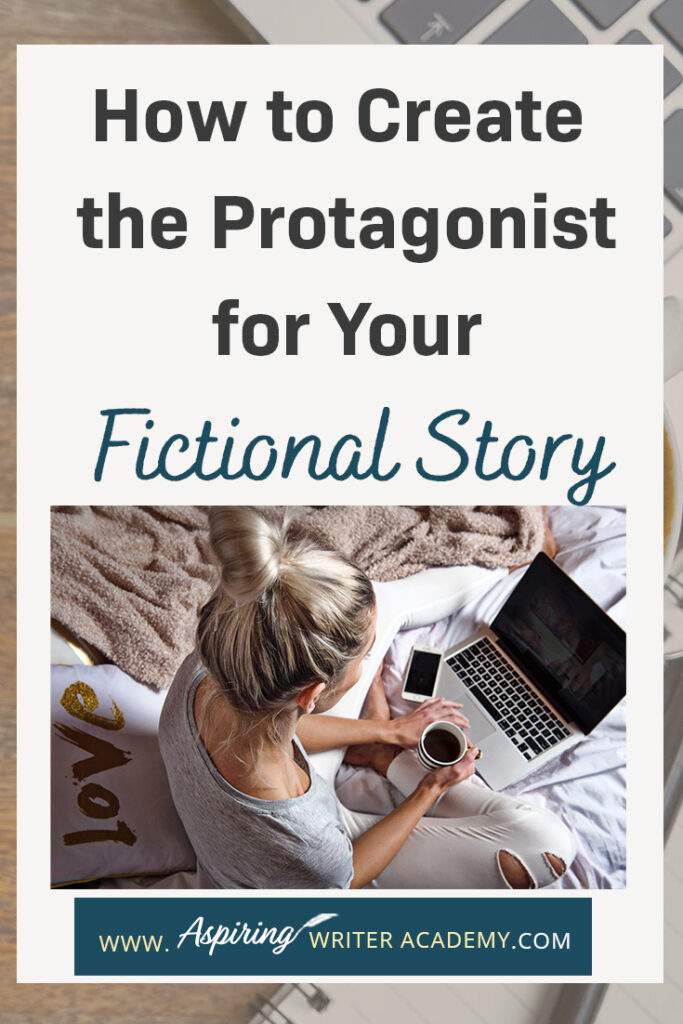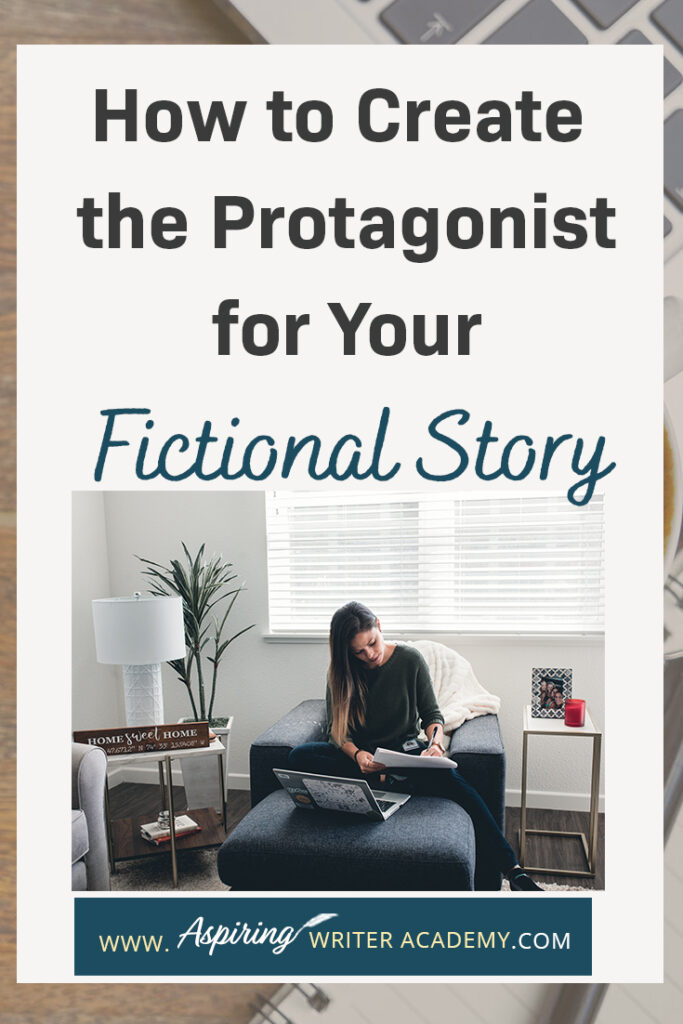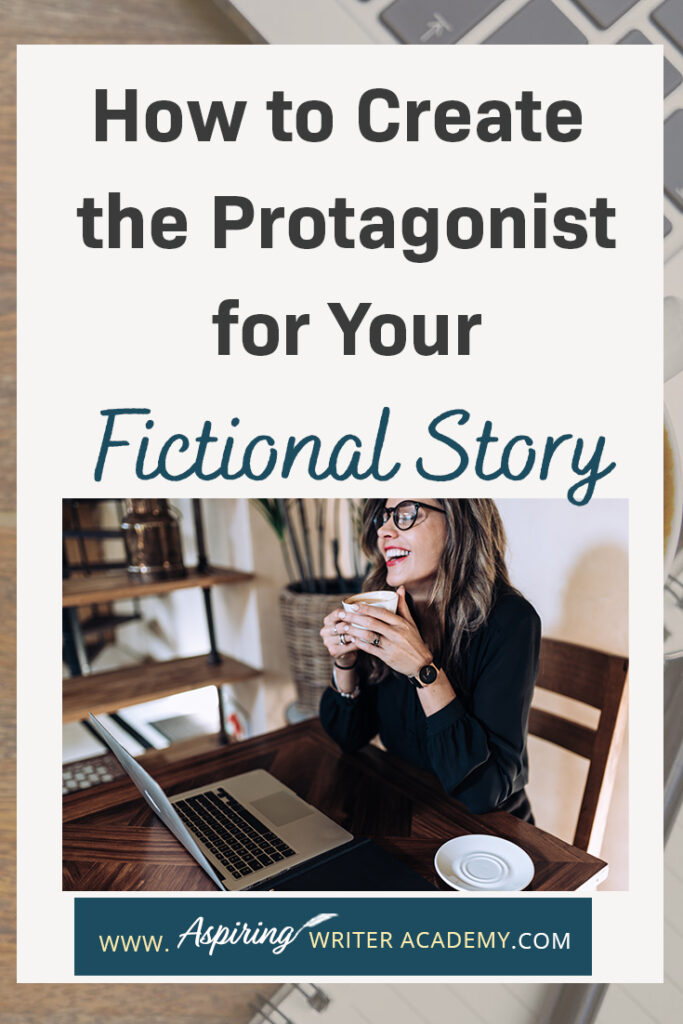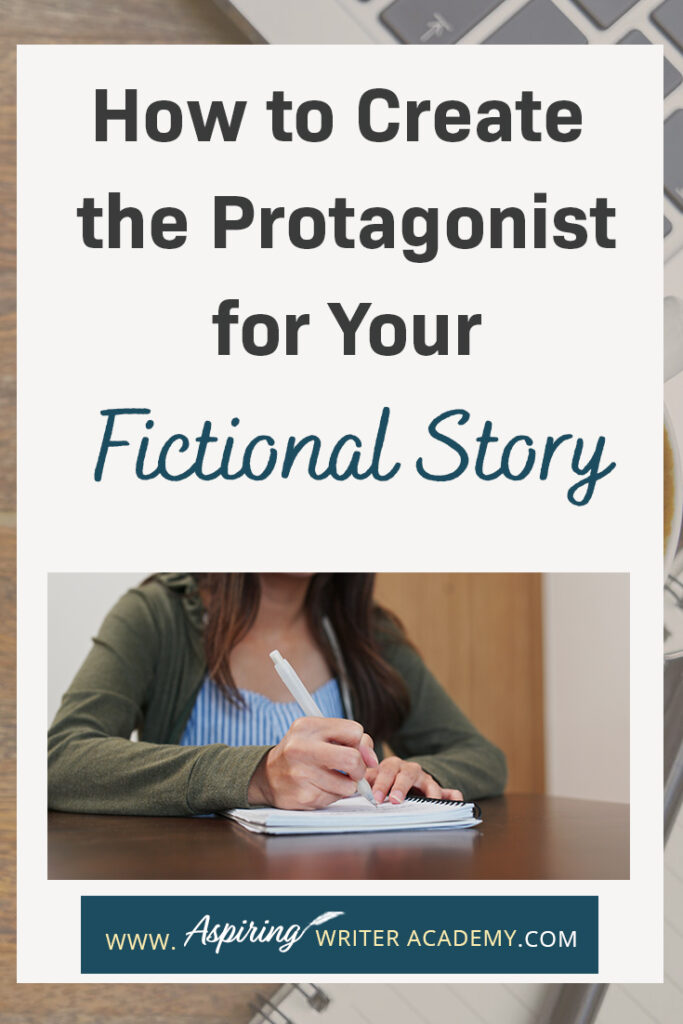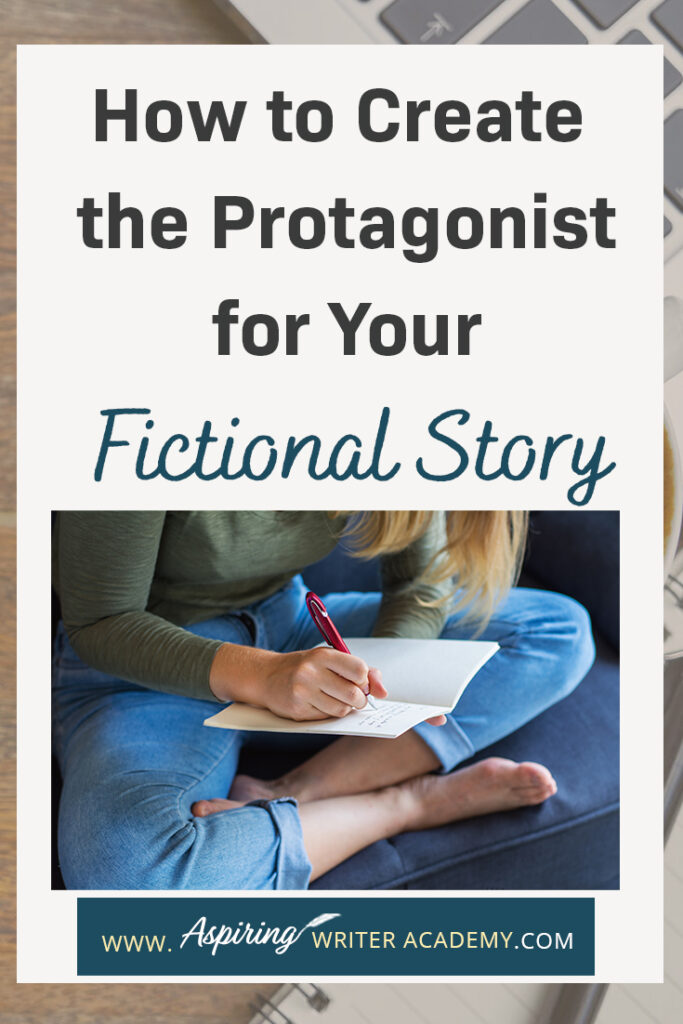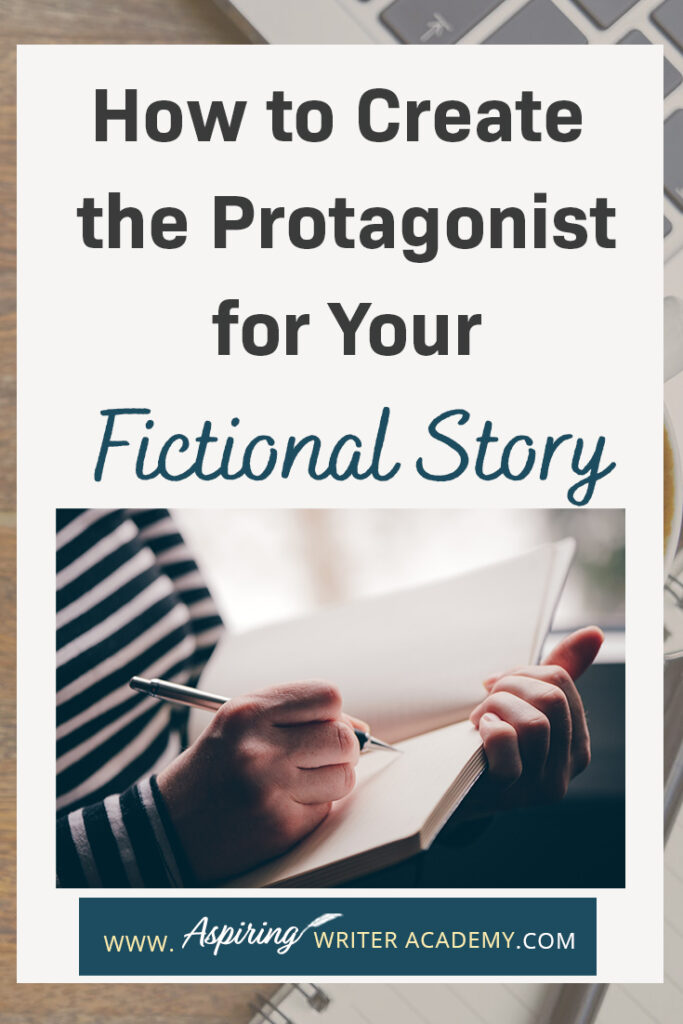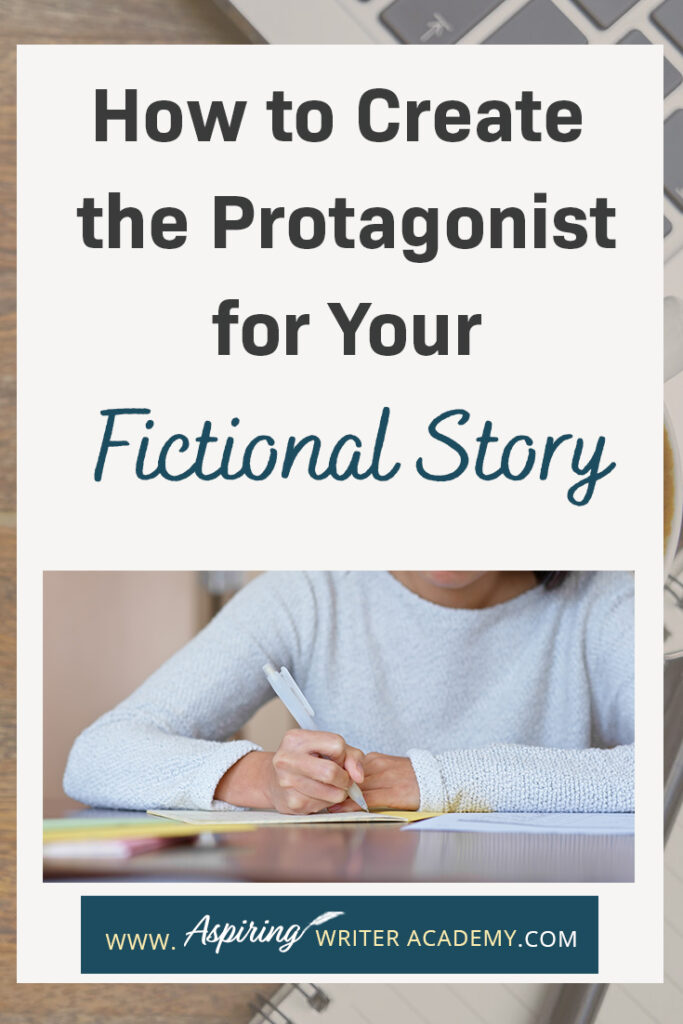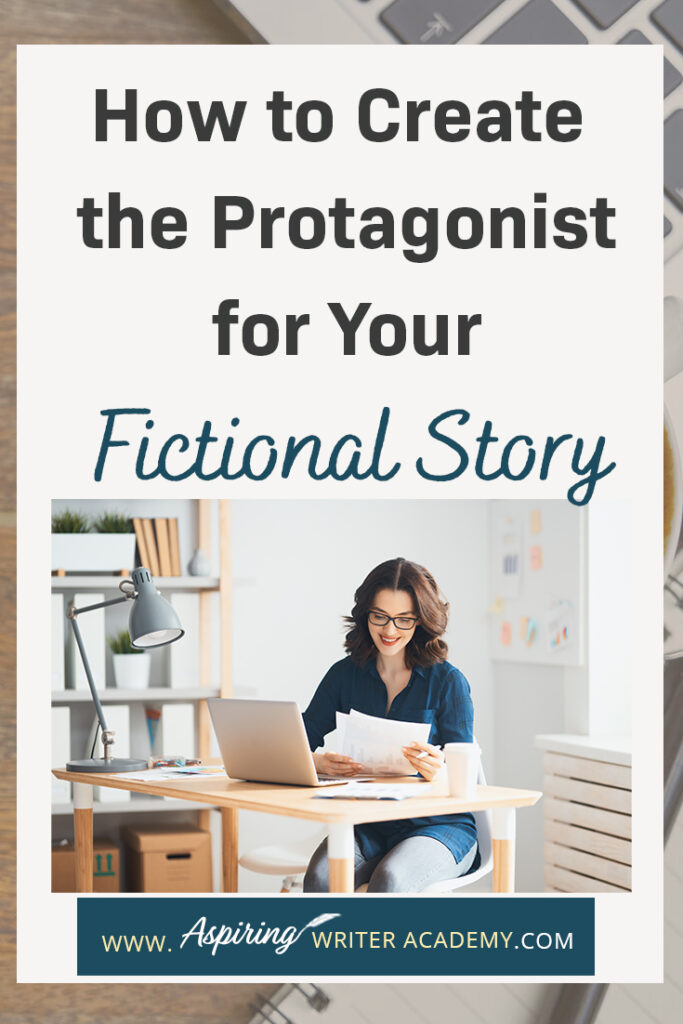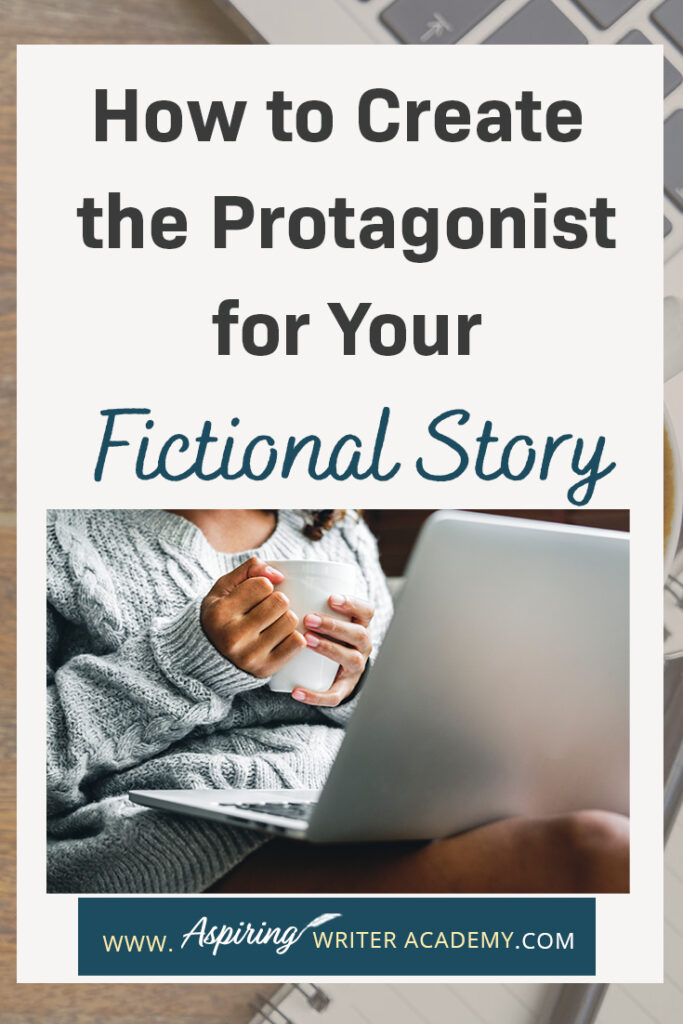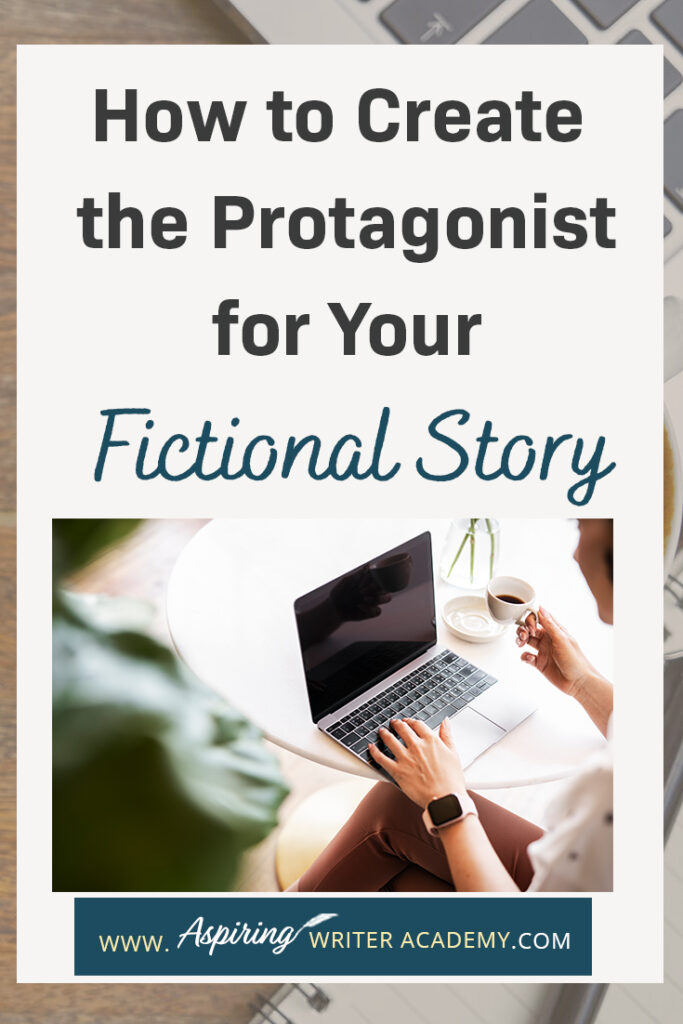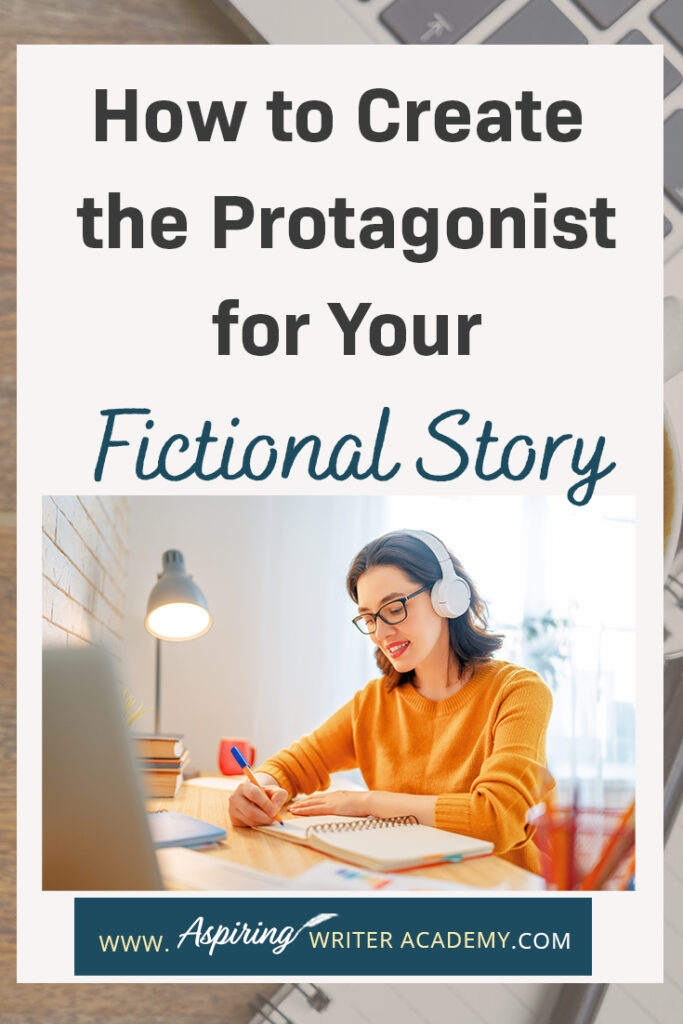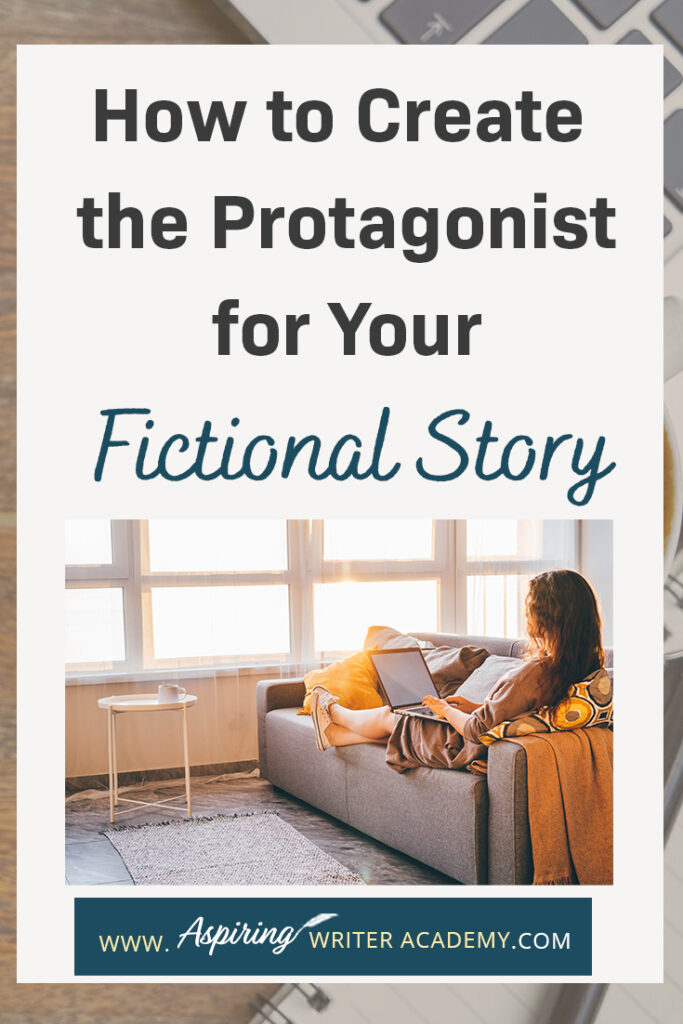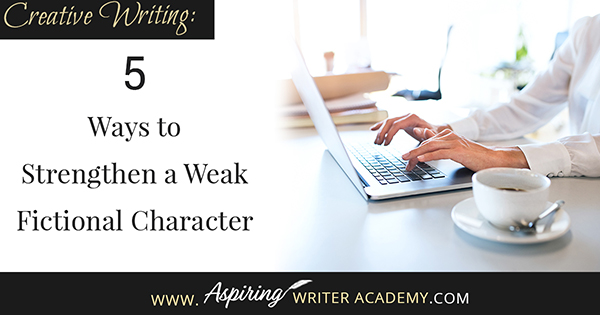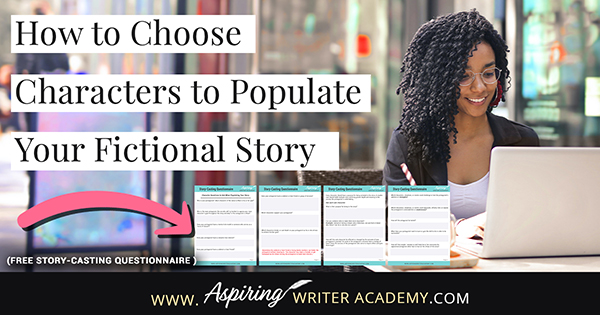How to Create the Protagonist for Your Fictional Story
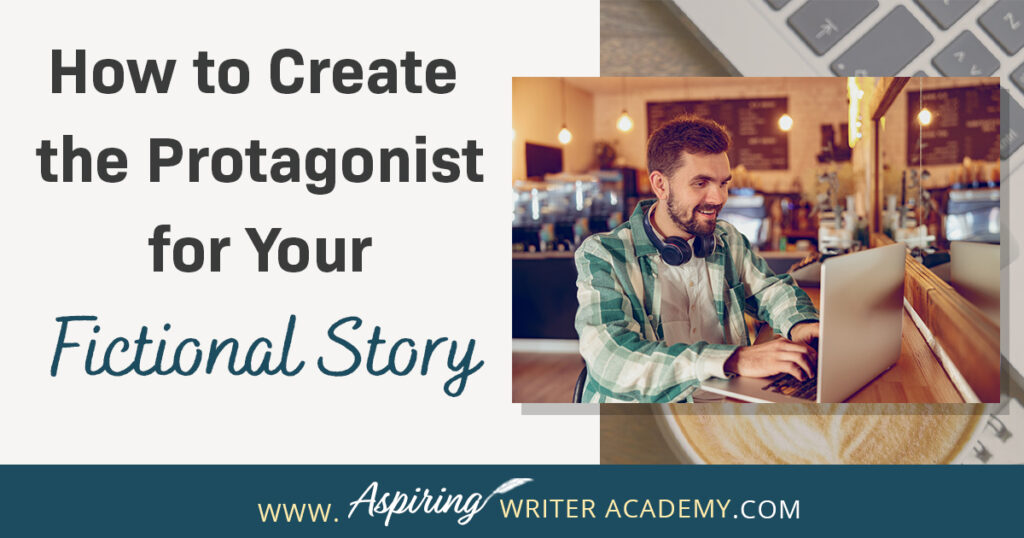
Are you interested in writing a novel but struggle with a story idea or how to develop your main character? What should your character look like? What factors should you consider when creating their personality? How does the story influence character and character influence story?
In our post, How to Create the Protagonist for Your Fictional Story, we lead you step-by-step in the development of a main character your readers will relate to, root for, and enjoy.
Who is your main character (the protagonist) of your fictional story?
He or she is the one who drives the main action of the story, the person this story is about. This character has a goal they want to achieve, and the opposition will give it their all to try to stop him.
For this reason, the main character’s goal cannot be some wish, dream, or desire that has nothing to do with the story.
What is your character’s deepest desire, wish, dream, or goal?
This should not be just any want, but something the opposition is going to threaten and put in jeopardy.
Example:
If your character’s greatest wish is to become a notable painter but the antagonist kidnaps the character’s brother and she must find and follow a hidden map to find him, then the character’s wish has nothing to do with the main storyline.
But if your character’s greatest wish is to become a notable painter and the antagonist is a rival who wants to keep the character from getting into art school, or steals the character’s paintings from their art studio, then you have the beginning of a story.
Another solution: Or find a way to indirectly tie the character’s want/dream to the main storyline. If your character dreams of becoming a notable painter but the antagonist kidnaps her brother and she must find and follow a hidden map to find him, perhaps set a deadline for which this must be done, or her painting career will be threatened.
Example: She must find her brother and get back home in time for her first day at a prestigious art school, or to enter her art in a contest, or have it displayed at a gallery. A famous art collector will be there, and she feels like this is her one chance to launch her career. If she doesn’t find her brother and make it back in time, her career may be doomed.
Then, if art is indeed her strength, find ways in the main storyline that this can either help or hinder her quest to find her brother.
- Perhaps she doesn’t know it at first, but the map leads her to visit several art galleries to find the next clue.
- Or maybe she discovers the antagonist holding her brother is really trying to stop her from displaying her work at the gallery. Maybe they plan to steal her work from her studio while she is on the quest for her brother.
- Or if she is supposed to be following the map to find her brother (which will lead her directly into the Antagonist’s trap) and she doesn’t do what the antagonist expects because she is distracted by a painting she saw in a shop window, or marvels at the artwork of a street vendor, then this can help her thwart the antagonist’s plan.
Her love of art can help her escape without her even knowing it. This will frustrate the antagonist and it can also add humor to the story.
Or the opposite can happen: Her strength, her love of art, can divert her from following the intended plan and she may miss her chance to find her brother at that checkpoint because of it.
(This is how her strength can also be a weakness which can help or hinder her.)
What are your character’s greatest strengths and weaknesses?
As you can see, you will also want to consider what kinds of strengths and weaknesses you want this character to have in this story. What will they be good at? How can the flipside of their greatest strength also be their greatest weakness?
Example:
Our heroine, the main character, may be very talented at painting and have a good eye for color palettes and design. This is a strength.
But she loves art so much, it may distract her whenever she sees any kind of artwork on display. She may miss conversations, or miss important details or opportunities for other things in life, because she is too overly focused on art. This is a weakness, perhaps something she will need to work on during the course of the story. This could lead to her character arc.
What is going to be the protagonist’s character arc?
How do you want your character to change during the course of the story? How will this character grow or become a better version of herself by the story’s end? (The purpose of the story journey is to help the character grow.) What do you want your character to learn?
Using our art loving character as an example, perhaps she will learn to keep art in perspective. She can enjoy her painting but learn that people are important too, and she needs to devote time for each.
She will go from being a self-absorbed, overly obsessive, reclusive artist to a caring, trusting individual who loves others and will now balance her time between work and family. She will also use her time and talents to help others whenever she can. Maybe she will teach art classes.
What is the Inciting Incident that starts the main character off on their story journey?
If we continue with our example of a young woman who dreams of becoming a notable artist, the story will open with her facing a minor problem or dilemma related to her art.
Perhaps she messed up a painting for the upcoming gallery display and she needs to find a way to fix it. Or maybe the entrance fee for the art contest or gallery show is more than she can afford, and she needs to find a way to get the money.
Then after setting up the ‘story world’ in which this character lives and introducing the reader to some of the other characters, the antagonist / villain will do something to throw the main character’s ‘world’ off balance. The protagonist will be hit with a major problem that they must solve, or their lives will never be right again.
This problem isn’t anything this character can ignore. There are serious consequences if the character doesn’t act. The main character is forced to make a decision. What will the character do about this problem? He or she needs to create a gameplan, a step-by-step path that will lead them to overcome the problem. Or so they hope!
This Inciting Incident forces the main character to decide upon a new story-worthy goal to overcome the consequential problem thrust upon him. The new goal (gameplan) will include several incremental action steps. It will take the character the whole book to try to achieve this goal which sets up the story question for the reader:
Will the main character achieve this story goal?
The end of the book will give the reader the answer to this question.
Examples:
The Inciting Incident in the story about our aspiring painter occurs when the antagonist / villain kidnaps her brother and sends her a note stating that if she does not follow a map leading her to an ancient relic hidden in the walls of a medieval castle and bring it to him, her brother will die!
The main character’s new story-worthy goal: to find and follow the map that will lead her to the ancient relic that she can hand over to the kidnapper in exchange for her brother’s release.
Will this goal take several action steps to achieve? Yes.
If the character fails, do the consequences matter? Yes.
Or perhaps:
The Inciting Incident in the story occurs when our aspiring artist goes into her studio to gather her paintings to display at the local gallery that weekend and discovers her paintings are gone! If she wants to display her work at the larger gallery opening in two weeks and use the profits to keep her apartment she shares with her ailing aunt, she must find a way to track down her paintings and expose the thief, or her career will be in ruins and she and her aunt may be tossed out to live on the street!
The main character’s new story-worthy goal: is to track down her paintings and expose the thief within two weeks to save her career and give her the means to support herself and her ailing aunt.
Will this goal take several action steps to achieve? Yes.
If the character fails, do the consequences matter? Yes.
What motivates your main character to achieve this story-worthy goal? Why does it matter so much?
For the character’s dire circumstances to matter, and hook the reader into caring what happens next, you need to reveal why it is so important that your character achieves their story-worthy goal to overcome the problem caused by the Inciting Incident.
Using our above character examples:
What is the aspiring artist’s relationship with her brother? Do they get along? Why does she care whether he is released by the kidnappers or not? Is she motivated by love or obligation or by her brother’s past loyalty toward her?
Similarly, in our second example, what is the aspiring artist’s relationship with her ailing aunt? Why does it matter whether they pay their apartment rent on time or get thrown out to live on the street?
In both cases, it is not enough to tell the reader that the character loves their family member. You need to show it. What experiences or instances in the past bonded them with the family member? What did this family member once do or say that they will never forget?
What is your main character’s ‘backstory wound?’
What happened in your main character’s past that makes trying to achieve this story goal so difficult? Give the reader a glimpse of an exact moment in the past that changed the character, a hurt, a wound to the soul that he or she still struggles with to this day. Perhaps a guilt they still carry or grudge or vulnerability from a specific incident.
Someone who was heartbroken in the past from betrayal or broken trust may find it hard to commit to relationships or trust anyone in the present story.
The events in this present story are designed to force the main character to face these hidden wounds and deal with them. What will have to happen in the story to allow this character to heal by the story’s end?
Example:
Perhaps a character who was bitten by a dog as a child is now fearful of dogs, yet this character will have to confront dogs at least three times in this present story and be able to overcome this fear to win against the antagonist or villain at the climax toward the end of this story.
How can you make your main character likable?
In beginning of story, right from the first page, it is important to show the reader why they should root for this character. If the reader doesn’t like or care about your character they will put the book down. Your number one job as an author is to make the reader care.
Hook the reader into your story by having the main character demonstrate one or more of their positive traits in the first scene. These likable traits must be shown in action. Show don’t Tell.
Example:
You might show your main character helping another person, proving that they are caring or considerate.
If the character has the strength of Superman you might show the character lifting a heavy car above their head to save the life of a dog or small child or elderly woman (the vulnerable of society.)
If your character is an expert violinist, you might show him playing at a competition and have him win only to give the prize to someone else who needed it more.
Perhaps your character has a cause they fight for like women’s rights or justice for those trapped in slavery or homeless pets.
These are all noble, sacrificial, kind, caring, acts the reader can respect. Make the bond with the reader. Make your character likeable by showing some of their positive traits, and then later on, you can reveal some of the character’s weaknesses after the reader is already hooked. Always make the main character’s positive traits outweigh his flaws.
What beliefs, attitudes, or longings does the character share with your reader? What can your reader identify with? Prove to the reader that your character is worth following through all the pages of your book.
Does this character have a unique or special ability?
What about this character’s personality makes this character special or intriguing or different than most other people?
Is there a special habit that defines him?
Why should we like this character?
How would you describe your main character to a friend to point out their good traits? How would you convince a friend to like this character?
Exercise: Write this out in a full paragraph for yourself while brainstorming your character and see what you come up with.
How can you hook the reader by using universal traits and emotions most everyone can relate to?
Maybe your main character is trapped in a bad situation and longs for things to be different. Longing for change is appealing. Almost everyone can relate to feeling lonely at one time or another. The longing for love, friendship, freedom, the desire to feel needed, and feel worthy, and the need to seek truth and justice are all universal emotions that readers around the world can identify with.
Example:
Even if your character lives on another planet where they eat alien insects for breakfast, if your character has his feelings hurt when he is snubbed by others, the reader will still identify with this character because of his hurt and will care to see how he fares as he struggles to fit in with others while attempting to achieve his story goal.
Many writing gurus will tell you to make your main character sympathetic. By this they mean, make your character relatable to the reader in some way. While you can show your character deserving of sympathy for some injustice, do not have your character indulge in a pity party and think this will somehow bond him to the reader.
Instead, show your character’s spirit strong and resilient and determined to get ahead, despite the injustice done to him. These character traits are what will attract your reader’s attention, not the character’s sob story.
What is your character’s personality in a nutshell?
Does your character have a motto or a ‘catch-phrase’ that they use?
If your character’s personality or attitude could be captured in a slogan printed on a t-shirt or bumper sticker, what would it be?
Lastly, because your character’s personality is far more important than their appearance: What does your character look like?
Considering the character’s personality, and his personal desires and the story-worthy goal that he must achieve, how can your character’s appearance and physique help or hinder what they must do in this story?
While you can have your character look any way you please, it may benefit the story if you give him or her a challenge based on their appearance.
Examples:
If your main character has blonde hair and needs to hide her identity among a community where brown hair is prevalent, she may need to wear a hat or a head scarf to escape a dangerous situation.
Or if your character suffers from an old football injury and now has a limp, it may prove difficult for him to run and chase after a villain.
Maybe your character is short, and his height hinders him from reaching items on tall shelves or from climbing and hiding in the branches of a tree.
Or the opposite, if your character is very tall, he may walk with a stoop to try to blend in with the rest of the crowd.
Should your character be lean or overweight? Are they weak or strong muscled? How could this help or hinder him in his story journey? How could it make the story more interesting?
Does the color of your character’s eyes matter? It might, if she is trying to hide her identity and needs to wear different colored contact lens. It might also matter if the color of your character’s eyes reminds the antagonist or a sub-character of someone else.
Putting it all together:
Now that you know your main character’s wants and desires, the inciting incident that launches him into the story and forces him to create a story-worthy goal, and have nailed down his personality and appearance, it is time to start writing!
We hope you have enjoyed reading How to Create the Protagonist for Your Fictional Story, and that you have learned some valuable tips to help you create a well-balanced main character that your readers will root for and adore.
If you have any questions or would like to leave a comment below, we would love to hear from you!
And if you would like additional help developing your story idea, we invite you to download our Free Brainstorming Your Story Idea Worksheet.
Similar Blog Posts You May Like:
Do you find it difficult to create compelling antagonists and villains for your stories? Do your villains feel cartoonish and unbelievable? Do they lack motivation or a specific game plan? Discover the secrets to crafting villains that will stick with your readers long after they finish your story, with our How to Create Antagonists & Villains Workbook.
This 32-page instructional workbook is packed with valuable fill-in-the-blank templates and practical advice to help you create memorable and effective antagonists and villains. Whether you're a seasoned writer or just starting out, this workbook will take your writing to the next level.
Our Goal for Aspiring Writer Academy is to help people learn how to write quality fiction, teach them to publish and promote their work, and to give them the necessary tools to pursue a writing career.

ENTER YOUR EMAIL BELOW
TO GET YOUR FREE
"Brainstorming Your Story Idea Worksheet"
7 easy fill-in-the-blank pages,
+ 2 bonus pages filled with additional story examples.
A valuable tool to develop story plots again and again.
Other Blog Posts You May Like
The Money-Making Author Mindset: Strategies for Financial Growth and Success for Writers
Fiction Writing: The 3 Different Levels of Editing
Learn To Plot Fiction Writing Series: Story Analysis of the Movie “Top Gun: Maverick”
5 Reasons Your Writing Sucks! (And How to Fix It)
How to Brainstorm a New Novel Using Goal, Motivation, and Conflict
How to Write Query Letters (for Fiction)
Slingshot Week: How to Set New Goals for Writing in 2023
Novel Writing Tips: Don’t Bury the Dialogue!
How to Choose Characters to Populate Your Fictional Story
Fiction Writing: Critique Group Etiquette & Warning Signs of a Good Group Gone Bad
How to Prep for NaNoWriMo (National Novel Writing Month)
Fiction Writing: How to Plot a Story where the Antagonist is an ‘Invisible Foe’
Fiction Writing: How to Find a Critique Partner/Group
How to Research Information for a Historical Novel
7 Steps to Begin Writing a New Fictional Story
Scene & Sequel: The Secret to Plotting an Epic Novel
Scene & Sequel: The Secret to Plotting an Epic Novel (Part 2)

is a multi-published author, speaker, and writing coach. She writes sweet contemporary, inspirational, and historical romance and loves teaching aspiring writers how to write quality fiction. Read her inspiring story of how she published her first book and launched a successful writing career.

